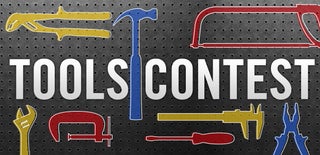Introduction: Sleek ESP8266 Breadboard Adapter With Pin LABEL
ESP8266 WiFi to Serial Module is a real craze nowadays, so I ordered mine.
After receiving I was excited and wanted to test it with my USB-Serial adapter using the Breadboard but realized that it cannot be inserted in the breadboard directly!! The commercially available adapters are costly and delivery would take time so I made this adapter.
Step 1: Tools & Components
I used whatever I had at hand, but you can improvise and make it more professional
COMPONENTS:
- Vero Board (or Line-Vero)
- Male Header Pin Strip
- Female Header Pin Strip
- Cello Tape (for Lamination)
- Double-Sided Adhesive Tape (or even Craft Glue will do)
- Solder
TOOLS:
- Soldering Rod
- Scissors
- Hacksaw Blade 12" (or better a Hacksaw)
- Wire Cutter
- Tweezers
Step 2: Preparing the Components
You only need a 5x4 holes vero section where there should be 5 rows of copper track of length 4 holes.If you can't follow see the photos and you would know what I mean by that.
- Now cut that part using the hacksaw blade and finally cut smaller parts using the wire cutter.The Wire cutter works better to straighten the edges.Now cut four copper tracks at the middle as I have done.
- Cut two Strips of 5 Male Header pins each.
- Cut two Strips of 4 Female Header pins each.
- Push the 5-Pin Male header pins all the way down until they are invisible in one side of the plastic frame.
Step 3: Soldering..
Remember: Solder the Female Header (4-Pins each) before the 5-pin Male Headers.Or else it would be a hell of a work to solder the female headers afterwards.
Solder the female headers together in dual-row type along the cut tracks of copper.
Now Insert and Solder the Male headers on either side of the dual row Female Header.
**The uncut copper track below provides a bridge(short) between either side of the breadboard or it can be used to bring a single pin from one side to the other.From top it forms an uncovered part of vero which gives a sense of direction to the adapter.
Step 4: Preparing the Pin Labels
Print the Pin-Labels PDF I attached in an A4 paper with actual size (don't use fit-to-page).
Cut the labels a little outside the border then stick the printed side to a clear cello-tape piece.
Now carefully cut the extra portion of the cellotape along the border of the label.
Do this for both the labels (for each side).
Step 5: Sticking the Labels
Stick the Labels on their respective sides as shown with respect to the uncovered edge of veroboard:
- Cut a portion of the Double-sided sticky tape and attach to one side of the female header.Now peel off the paper to expose the other sticky side.
- Now carefully stick the correct Label with the help of the tweezers, aligning the edge with the top edge of the female header.
- Do the same for the other side.Now press to stick it properly.
Step 6: Connecting the ESP8266
To align the pins correctly with the Pin-labels consider the instructed orientation.
The tail end of the printed antenna on the PCB of the ESP8266 module should be pointing to the same direction as the veroboard uncovered edge.The photo above will clarify the orientation
Attachments

Participated in the
Small Spaces Contest

Participated in the
Pi/e Day Contest

Participated in the
Tools Contest












